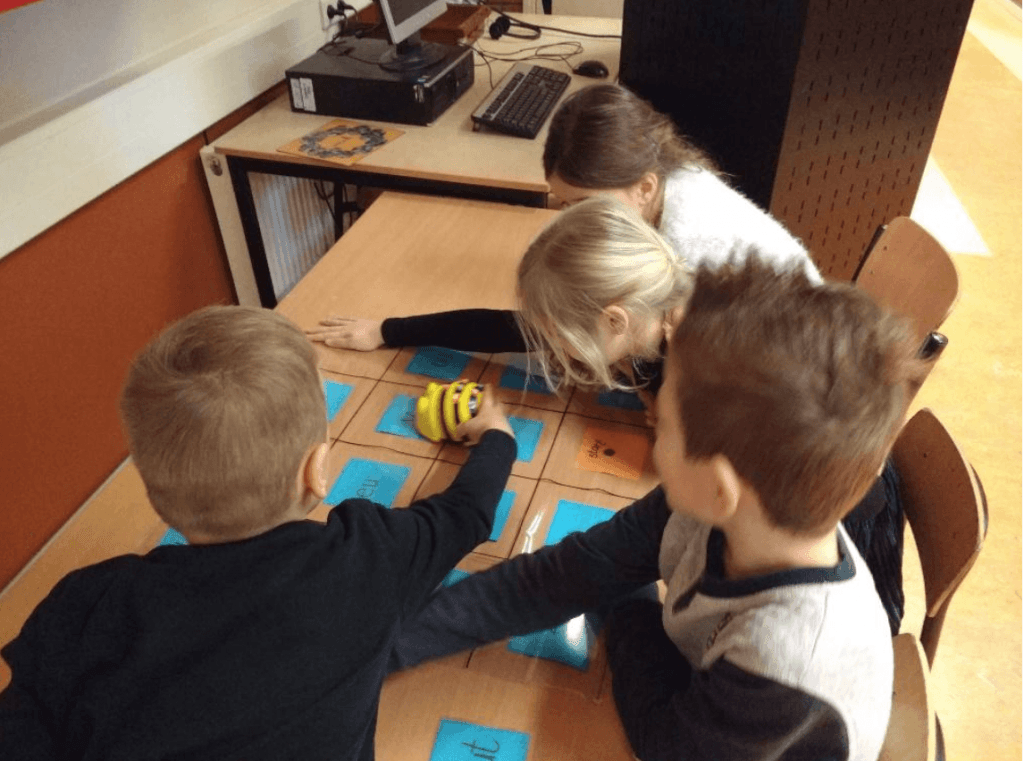
The Brainport schools have recently added a new level to their system – the level of primary schools. Brainport school is the innovative concept of school that was developed in Eindhoven region to contribute to its development. The pillars of Brainport school are the curriculum closely connected with the world outside of school, internationalization, entrepreneurship of students, research and design learning. How does the Brainport school concept work on the primary level of education? E52 visits Brandevoort Primary School (Openbare Basisschool Brandevoort) – one of the first 9 primary schools in Eindhoven region that have obtained the status of aspiring Brainport schools.
Teacher Sacha Keijer, who has been one of the main driving forces of OBS Brandevoort for acquiring the Brainport school status, says that incorporation of Brainport school principles into work requires serious commitment from the teachers. The greatest difference from a regular primary school and a considerable challenge for an educator is that schoolchildren are being taught how to learn in an independent way. The main point is to let the children learn in accordance to their talents and interests – in order to stimulate their intrinsic motivation for learning. “There is no fixed page to teach, your teaching should be more like coaching”, says Keijer. This manner of teaching requires an individual approach to every child, which might be challenging in a class of 25.
New type of learning means new type of thinking. “Children are taught to use computational thinking: when you have to solve a problem, deal with it by breaking it into smaller problems,” says Harold Donkers, the location manager. The essential way of learning in a primary Brainport school is learning from your own mistakes: “Children are not expected to do everything perfectly. They learn that you have to make mistakes before you make something good”, says Donkers.
Teaching in Brainport schools does not come from the teacher only: parents, local community, companies, and institutions of the region – all of them contribute to the education and development of the young ones. “On one day, children may go to the local butcher’s shop or to the bakery and see how people work there. We can give long lectures on how things work but it is much more effective to let the kids see it with their own eyes”, says Harold Donkers. Brainport is one of Europe’s leading technology regions, hence technology is an important theme in Brainport schools’ curriculum. High-tech companies of the region offer their support in teaching the young generation: in Brandevoort primary school, children learn and play with micro:bits given by NXP. Through interacting with the small robots, children start their programming learning curve.

The teacher in the Brainport primary school is not an autocratic figure always telling the children what to do and when to do it – within the Brainport school framework educators and students are partners, so this ground rule ensures a higher level of independence of a schoolchild. This attitude to young learners is visible even in small details: during my visit, the children were asked to show me a Bee-Bot, so in the middle of the lesson they left the classroom and started programming games with the robot in the hall. The teachers told me that the children would not be made to go to the lesson after I leave – young students should return to their classroom by their own will, when they naturally get bored with the activity.
In order to boost learners’ creativity and problem-solving skills, Brainport primary schoolchildren participate in the projects based on real-life cases. “Children think out of the box, sometimes they can come up with unexpected solutions to real-life problems”, says Harold Donkers. The first big problem-solving project for Brandevoort Primary School pupils will start on the 3rd of April when the mayor of Helmond will open the Designweek@OBS-Brandevoort and present the project topic to the children.

